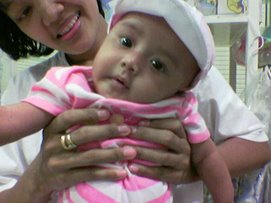In 1982 Department of Social Affairs launched Kelompok Usaha Bersama -KUBE/ Cooperative Micro Business Group -as an effort to eradicate the number of ‘fakir miskin’ people. Fakir miskin similar with the poorest of the poor. KUBE is a group of poor families created based on their choice, co interacting to each other, living in a certain areas with the purpose of improving the productivity of their members, building harmonious social relation, fulfilling the needs of their member, solving social problems existing around them and becoming the mean of co-partnering business activities.
According to management principles, poverty alleviation program could be devided into activities: planning, organizing, leading/ actuating, and controlling. Planning, essential to the success of any program, is typically includes identifying goals, objectives, methods, resources needed to carry out methods. In this research planning is identified as the way of choosing regency/ municipalities (kabupaten/ kota) as location of the program. The method of KUBE program due to choose some priorities regency/ municipalities is the total number of fakir miskin or the poorest of the poor in that area. This research focus on how the KUBE program could catch-up the spatial concentration due to poverty enclave under region of kabupaten/ kota.
The other goal of this research are first to show a descriptive pattern of spatial concentration of poverty in Indonesia especially in Java, measure inequalities in poverty rate between provinces in Java. Seccond to know how the KUBE’s people reach the benefit of spatial concentration. On the year of 2004/ 2005, KUBE program under scheme of Micro Finance Institution –collaboration with Pinbuk or Pusat Inkubasi Bisnis Usaha Kecil (Incubation Center for Small Medium Enterprise). On 2006 the program named with Surat Kuasa Pengguna Anggaran or SKPA (Authorization Letter Budget Spender) –Department Social Affair give authority to the head of Social Institution in kabupaten/ kota to use the money, and 2007 with Bantuan Langsung Pemberdayaan Sosial (BLPS) or direct transfer for social empowerment. The result of this research showed that, although the concept of BLPS is better off than the other schemes in order to catch-up the spatial concentration but BLPS’s implementation of choosing regency/ municipalities is not better than the other –or than the previous years. The other conclusion, based on qualitative research in kecamatan Wedi kabupaten Klaten and kecamatan Minggir kabupaten Sleman, showed that the mechanism to choose KUBE member must be aware of market –besides input and labor resource. I use Kruskall-Wallis test, Wilcoxon test, and Theil Index to explain how right/ wrong the poverty enclave to be implemented in KUBE Program.





